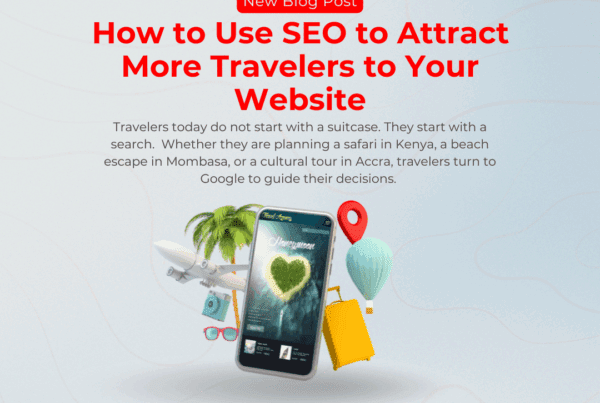Have you ever walked into a restaurant and immediately walked back out because something about it simply didn’t do it for you? Consumers experience the same thing when deciding whether or not to stay on a website.
A bounce is recorded when only a single page is visited on a website. I.e., the visitor leaves the landing page without interacting with the website any further.
A high bounce rate is normally due to SEO malpractice, and most people believe that a high bounce rate equates to poor page performance but it’s a little more than that.
Here are some of the most common causes of high bounce rate and how to address them:
Slow Site Speed

The majority of people are aware that page loading time is important for web traffic. Visitors are on the move and have no time to waste. In addition to that, Google prioritises site speed when it comes to ranking.
If your website won’t load fast enough, you’re giving in to the competition. According to studies, even a one-second delay can cost you up to 7% in conversion rates.
Run a Page Speed Insights test and follow Google’s recommendations to ensure that pages run smoothly, and assess large media files and rewrite web copy if necessary.
Misleading titles and meta descriptions

When the wrong audience lands on a page, a bounce is common. It all starts with the way a page is optimized.
Misleading title tags and meta descriptions leads to poor targeting, which makes users go back to the SERP to find a page that best answers their questions if they land on the first page and they find it wasn’t what they were looking for.
The snippet is your first opportunity to get attention. Consider the snippet like an advertisement. Your first opportunity to get attention. It should be professionally written, and accurately summarize the landing page.
Poor Quality Content

If you want to get people to click on your website, make sure the page content meets their expectations. Users will feel misled if you fall short of their expectations which then becomes impossible to avoid bouncing.
Try your best to create compelling content. Here are the basics of a well-optimized website:
- Headings should be optimized for main keywords.
- Improve internal linking by keeping phrases short.
- Use enticing calls to action to get people to take action.
- Keep users interested by linking related blogs.
404 Not Found

Blank pages and errors are a UX nightmare. The majority of visitors will leave and never return.
Nobody enjoys landing on an error page, so surprise them. Include a lighthearted message and direct visitors to relevant content.
Bad Link From Another Site
Visitors bounce because they were misdirected to your site by another source.
Crawling your website will assist you in finding any old or broken inbound links. If found, contact the other website’s author and request that the link be updated or deleted.
Not Mobile-Friendly
What? We’re heading to 2022 and your website is still not mobile-friendly? More than 80% of the online time was spent on a mobile device. That is how much traffic you are missing out on.
If your analytics show that your pages perform well on desktop but not on mobile, it’s no surprise that people are leaving.
Long fill-out forms

You’ve probably started filling out a website form and then abandoned it. We’ve all done it.
Keep forms short, relevant, and simple to complete, and assure your visitors that their information will be kept private.
There is no CTA
The visitor will leave after finishing their browsing if there is no call to action. If your business promotes a product or service that is related to the content, include a clear link to that page. If you don’t have a product or service to promote, try linking to related articles that will keep visitors on your site longer.
Did you find this article helpful? If so, please go ahead and share with your networks, it will be highly appreciated.
Charleson is the leading Digital Marketing Agency in Kenya. Reach out to us here for any of your digital marketing needs.
Until next time, cheers!



